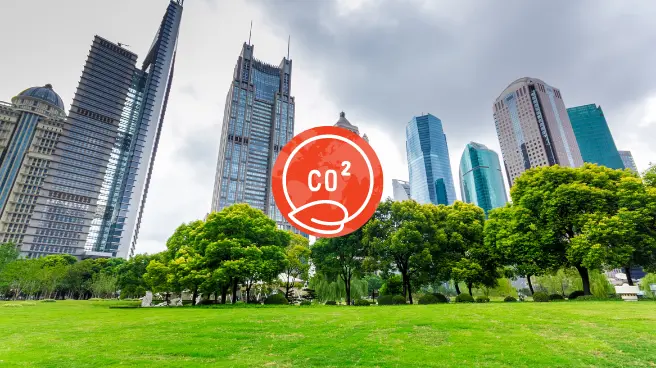The negative effects of climate change are often felt firsthand, such as extreme weather conditions, storms, or droughts. In cities, the average temperature has been steadily rising in recent decades, which is not only caused by climate change but also by the so-called urban heat island effect. However, global warming also contributes to rising temperatures everywhere, which can exacerbate the already warm urban climate. To avoid catastrophic effects on healthcare, livelihoods, economic development, social security, and vital ecosystems, the European Union has set a goal to reduce greenhouse gas emissions by 50% by 2030 and to achieve net-zero emissions by 2050.
Cities are not only affected by climate change but also contribute significantly to its negative effects: urban areas worldwide consume more than 65% of energy and are responsible for more than 70% of CO2 emissions.
This is mainly due to human activities such as building heating and cooling and transportation. However, cities also play an important role in fighting climate change. Measures that support sustainable urban development can have a significant impact on reducing cities’ carbon dioxide emissions and mitigating the effects of climate change.
EU efforts: net zero by 2050
The aforementioned dates are rapidly approaching, but fortunately, many European cities are participating in initiatives to achieve zero emissions. The European Union has committed to achieving carbon neutrality by 2050 and supports the efforts of member states and cities to do so. As a first step, in the spring of 2022, the European Commission named 100 EU cities that are involved in the so-called Climate Neutral and Smart Cities program. The goal is to reach net-zero emissions by 2030, serving as an example for other municipalities to achieve the 2050 goal. In Hungary Budapest, Miskolc, and Pécs are among the selected cities.
One thing is for sure: these efforts are necessary for the future of our planet, but are they realistic? According to a 2020 study, the EU must reduce net greenhouse gas emissions much faster to achieve the 2030 and 2050 goals.

The 100 selected EU cities that plan to achieve zero emissions by 2030. Source.
Copenhagen, the world’s first carbon-neutral city?
Back in 2012, Denmark’s capital, Copenhagen, announced its plan to become completely carbon-neutral by 2025. If successful, Copenhagen would not only become the world’s first capital city to achieve this goal, but also five years ahead of the other cities participating in the EU program. However, in the summer of 2022, the Danish capital concluded that it could not achieve its goal, which was due to financing issues, the lack of political will, and perhaps the most significant constraint being the technological obstacles.
Examining the Copenhagen example provides essential lessons. The city administration expected to reduce emissions by 80% by converting its electricity and district heating systems to biomass, wind and solar power, making buildings more energy efficient and improving public transport. The remaining emissions were planned to be reduced by installing carbon capture and storage (CCS) technology in the local waste-to-energy plant. The technology captures carbon dioxide in the chimney before it enters the atmosphere and stores it underground. However, in August 2022, it turned out that the power plant was not eligible for state support for CCS, so in the end, Copenhagen gave up its commitment. At this point, it is most noticeable that political will could not have been too strong if the capital gave up the entire project due to the lack of state support for the 20% part.
However, a study by Lund University and the University of Copenhagen fundamentally questions the city’s reliance on “immature technology” – that is, CCS. The study argues that carbon dioxide capture was never advanced enough to achieve the desired results, with or without state support. What can we learn from this example? First, achieving carbon neutrality is a complex task that requires significant investments, political will, and technological development. Second, it is essential to support technologies that have already proven their effectiveness and reliability.
With smart parking for carbon neutrality
Smart Lynx’s digital smart parking system is just one such choice, and while not alone, combined with other technologies and measures, it can be an important part of sustainable urban development strategies. Currently, more than 6,000 smart parking sensors send data on parking occupancy in Budapest’s 5th and 13th districts, as well as in the city center of Pécs. Thanks to the parking systems installed so far, we estimate that carbon dioxide emissions are reduced by more than 175 tons annually. Just imagine how significant this number would be if this solution were applied in all districts of Budapest.

Sustainable urban development is about cities being able to meet the needs of present generations without jeopardising the opportunities of future ones. Its aim is to promote ecological, economic, and social sustainability, as well as to improve people’s quality of life and well-being. It is the responsibility of city leadership to make targeted decisions to achieve carbon neutrality in the interest of a livable future.To do this, it is important to act as soon as possible and to make good use of current technology.





